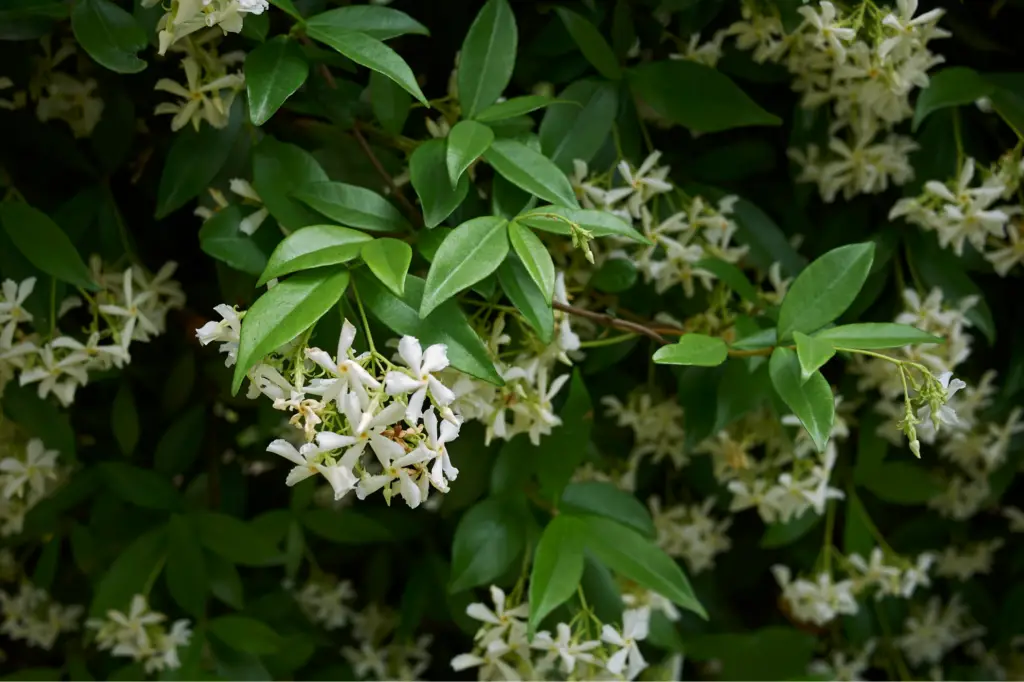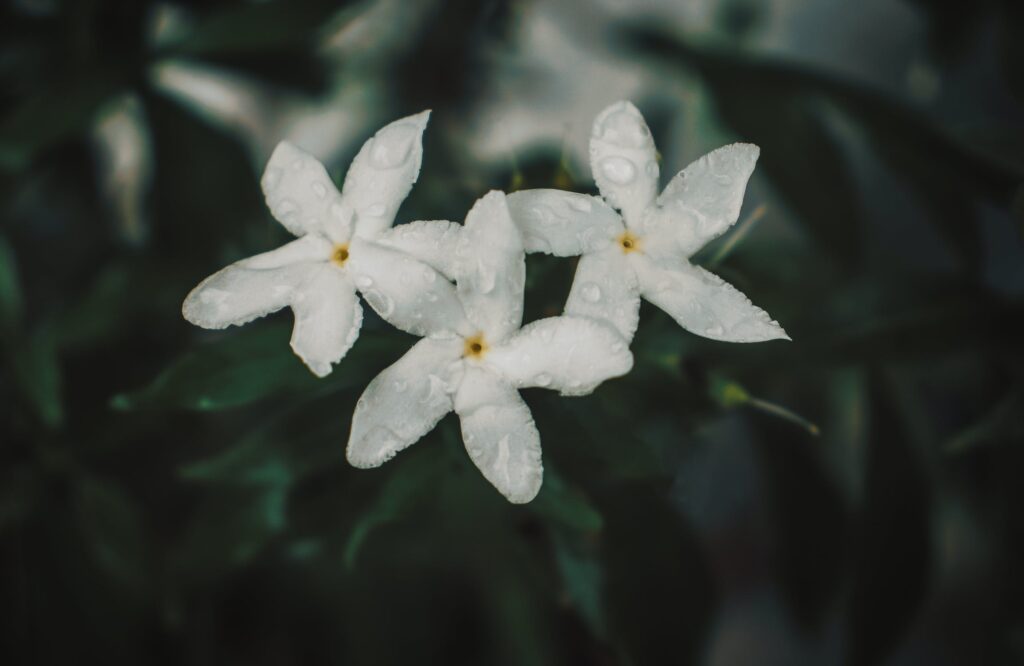Star jasmine, also known as Trachelospermum jasminoides, is a popular evergreen vine that is native to Southeast Asia. This fragrant plant is a favourite among gardeners for its star-shaped white flowers and its ability to grow and climb quickly. In this article, we will explore the benefits of growing Star jasmine as a houseplant, as well as maintenance required to keep it healthy and thriving.

Table of Contents
Benefits of Growing Star Jasmine as a Houseplant
One of the main benefits of growing star jasmine as a houseplant is the sweet fragrance of its flowers. The Star jasmine is an ideal plant to have in areas where its fragrance can be enjoyed. Additionally, the plant’s attractive glossy green leaves and twining habit adds a touch of natural beauty to any room. The plant’s fragrance is also known for stress reduction and improving mood. Like many other indoor plants, Star jasmine filters out pollutants such as formaldehyde, benzene, and trichloroethylene, making it an excellent choice for improving the air quality in your home. Furthermore, this plant can be a versatile addition to any indoor garden.
Caring for Star Jasmine as a Houseplant
Light and water requirements
Star jasmine thrives in bright, indirect light. Direct sunlight can cause the leaves to burn, so keep the plant out of direct sunlight, particularly during the summer. If you are growing the plant in a room with windows that receive direct sunlight, move the plant away from the windowsill during the hottest part of the day. Like most indoor plants, star jasmine requires regular watering to stay healthy. The soil should be moist, as waterlogged soil can lead to root rot. Water the plant thoroughly, allowing the water to soak through the soil and drain out the bottom of the pot, to prevent root rot.


Humidity and fertilisation requirements
Star jasmine thrives in high humidity environments, which can be a challenge in dry indoor environments. To increase humidity, place the plant on a tray filled with pebbles and water. As the water evaporates, it will help to create a humid environment around the plant. Star jasmine needs regular fertilisation during the growing season (spring and summer). Use a balanced liquid fertiliser every two to four weeks to help promote healthy growth and flowering.
Pruning and Propagation
Regular pruning is important for keeping star jasmine healthy and promoting growth. Pruning should occur during early spring before any new growth appears. Pruning helps control the size and shape of the plant, as well as encourage new growth and flowering. The Star jasmine’s cuttings should be propagated during early spring or summer. Place the cuttings in a well-draining soil mix and kept moist until roots develop. Once rooted, transplant them into larger pots and grown as individual plants.
Pests and Diseases
Like all plants, Star jasmine is susceptible to a variety of pests and diseases that can affect its health. The following are some of the most common pests and diseases that may affect the Star jasmine:
Pests:
- Spider mites – These tiny pests can be difficult to see with the naked eye, but they can cause significant damage to the plant by feeding on the leaves and sucking out their sap. Signs of spider mite infestation include yellowing of the leaves, webbing on the plant, and stunted growth. To control spider mites, the plant can be washed with a strong stream of water, or treated with insecticidal soap or horticultural oil.
- Mealybugs – These soft-bodied insects are easily recognizable by their cottony white appearance. They can be found on the leaves, stems, and flowers of the plant, and can cause stunted growth and yellowing of the leaves. Mealybugs can be controlled with insecticidal soap or horticultural oil.
- Scale insects – These small, flat, oval-shaped insects can be found on the undersides of leaves and along the stems of the plant. They can cause yellowing of the leaves and stunted growth, and can be difficult to control once established. Scale insects can be controlled with insecticidal soap or horticultural oil.
Diseases:
- Leaf spot – This fungal disease is characterised by dark, water-soaked spots on the leaves of the plant. The spots may enlarge and turn brown, and can cause the leaves to drop prematurely. Leaf spot can be controlled by removing affected leaves, and treating the plant with a fungicide.
- Powdery mildew – This fungal disease is characterised by a white, powdery growth on the leaves and stems of the plant. It can cause stunted growth and yellowing of the leaves, and can be spread through contact with infected plants. Powdery mildew can be controlled with a fungicide, and by improving air circulation around the plant.
- Root rot – This fungal disease is caused by overwatering, and can cause the roots of the plant to become waterlogged and rot. Signs of root rot include wilting, yellowing of the leaves, and a foul odor coming from the soil. Root rot can be prevented by allowing the soil to dry out between waterings, and by ensuring that the plant is not sitting in water.
Prevention is Key
Preventing pests and diseases from affecting the Star jasmine is often easier than treating them once they have become established. To prevent pests and diseases from affecting your Star jasmine, it is important to maintain good plant hygiene, including:
- Regularly cleaning the leaves and stems of the plant to remove any dust or debris that may harbour pests or diseases.
- Checking the plant regularly for signs of infestation or disease, and treating any problems promptly.
- Ensuring that the plant is not overwatered, as this can create a moist environment that is conducive to the growth of fungal diseases.
- Using sterilised tools when pruning or handling the plant, to prevent the spread of disease.
By following these tips, you can help to keep your Star jasmine healthy and free from pests and diseases.
Conclusion
In conclusion, the Star jasmine is an excellent houseplant that can add beauty and fragrance to any indoor space. With its stunning white flowers, glossy foliage, and easy-care nature, it is an ideal choice for both beginner and experienced gardeners. While the Star jasmine may require a little bit of extra care to thrive indoors. By following the tips outlined in this article, you can ensure that your plant remains healthy and beautiful for years to come. With the right growing conditions, regular care, and attention to potential pests and diseases, your Star jasmine can thrive and become a beloved addition to your home. So why not consider adding this beautiful plant to your indoor garden today?
